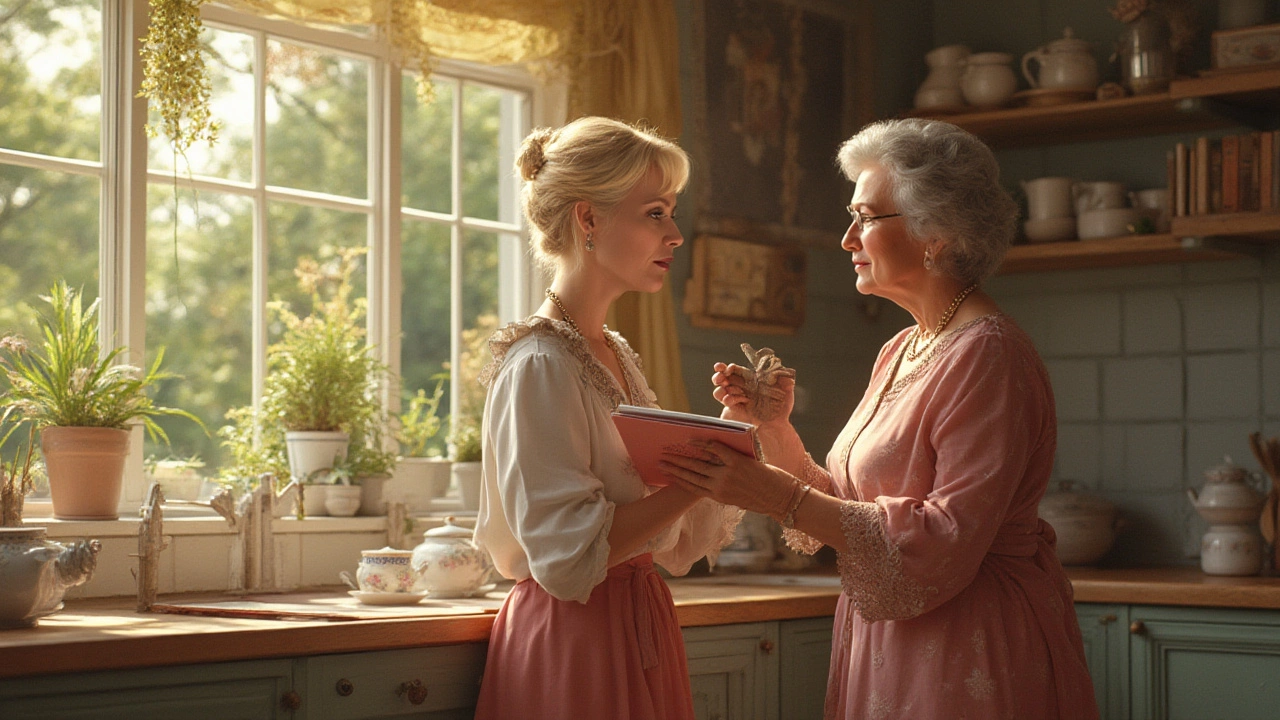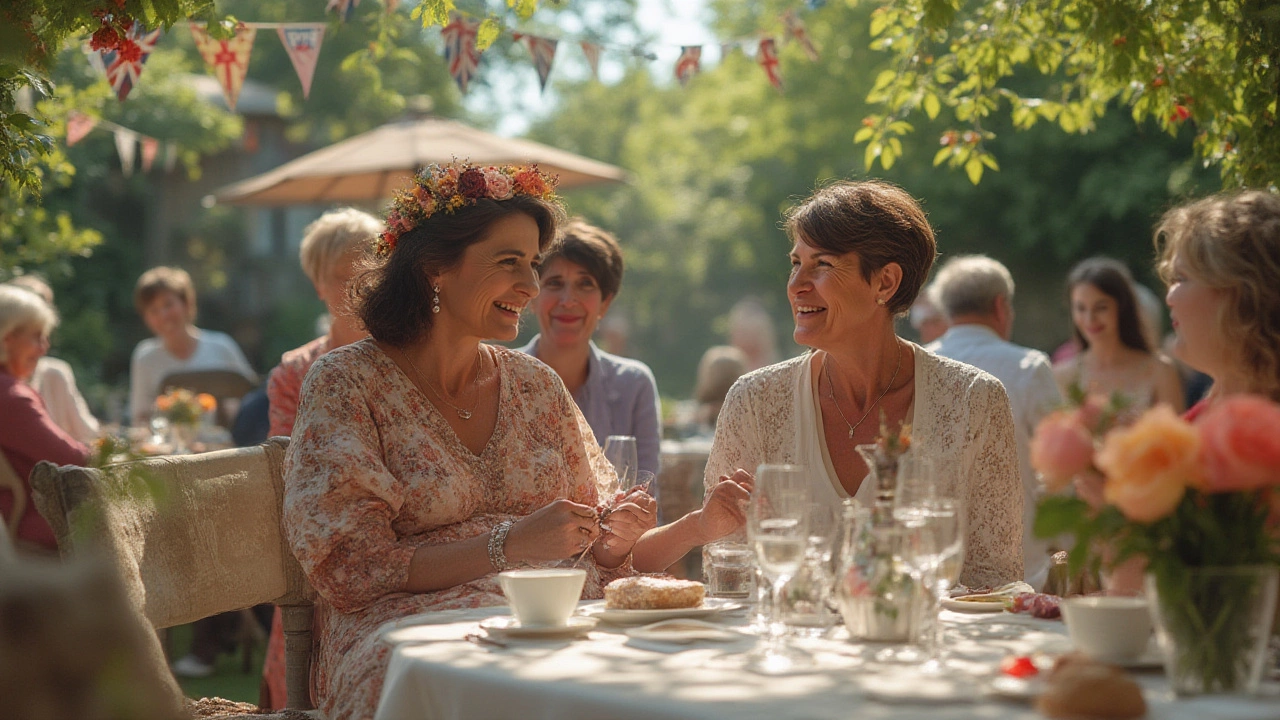A mother-in-law and daughter-in-law relationship starts taking shape long before the wedding vows. It's funny how a simple question—what does the groom’s mother give to the bride?—can spark such a whirlwind of feelings and expectations. Some say it’s a test of warmth, some see it as an old-school obligation, and others shrug and say, “It’s just a nice gesture.” But the truth is, whether you’re steeped in tradition or making it up as you go, this gift has deep roots and thoughtful reasons behind it.
Where It All Began: The Roots of Mother-in-Law Gifts
Jump back a couple hundred years, and you’ll find that a groom’s mom often played a massive role in the entire wedding process. The gift-giving part wasn’t just about wrapping up a pretty box; it was seen as a generous welcome into the family. In some cultures—think Italy, India, or even parts of the American South—there were specific rituals around this gift. For instance, Italian mothers-in-law often gave gold jewelry, like a bracelet or a family heirloom, as a nod to continuity and acceptance. In India, exchanging gold, sarees, or even household items is sometimes a big, elaborate affair. Even in the UK, it’s not unusual for a mother-in-law to pass on a brooch or locket that’s been in the family for decades.
But don’t think these traditions are frozen in time. Over centuries, the mood and meaning shifted. Some families see the gift as a symbol of unity and mutual respect. Others simply treat it as a welcoming gesture. In some parts of the U.S., gifts became way more practical—a nice handbag, a recipe book, or even personalized stationery. There are also cases where the gift is less about the object and more about creating a memory, like a mother-and-daughter spa day before the wedding.
What’s interesting is that there isn’t a single answer. It changes by religion, country, and even how close everyone is. Etiquette guides, like Emily Post’s or Martha Stewart’s, often suggest that there is no strict rule—some families skip this custom altogether, while others attach huge sentimental value to it. According to a 2022 Pew Research study, about 36% of surveyed couples said their families exchanged significant pre-wedding gifts, and this tradition was twice as common in multi-generational households. The trend is growing fast among couples who care about blending cultures or honoring roots while staying true to their personalities.

What Do Groom's Mothers Actually Give Brides?
So, down to brass tacks—what actually makes for an ideal gift between a groom’s mom and her soon-to-be daughter-in-law? You’d be surprised by the range. Heirlooms still top the list for sentimental families. These could be anything from antique rings, lockets, pins, or even a hand-embroidered tablecloth passed down for generations. The real magic is in the message: “You’re one of us now.” Heirlooms work great if there’s family history you cherish and want to keep alive.
But personal gifts are getting more creative every year. Some mothers-in-law write heartfelt letters—sometimes filled with stories of their own early marriage days, sometimes packed with family recipes. There’s something incredibly touching about a parent sharing wisdom, whether in writing or through a shared activity, like baking together ahead of the big day. Other moms go the luxurious route: designer handbags, spa vouchers, or custom jewelry tailored to the bride’s taste. In 2024, trending gifts reported by popular wedding planner blogs included dainty name necklaces and artisan silk scarves. Interestingly, the wedding portal The Knot noted that “experience gifts”—like wine-tasting tours or private painting evenings—are surging in popularity, with 42% of modern brides saying they cherish memory-making over material items.
Let’s not forget practical gifts either. Sometimes, the perfect offering is a simple, useful household item—like a high-quality mixer for a bride who loves baking. In fact, a 2023 Brides magazine survey found stand mixers and personalized kitchenware were the most gifted items, especially from families who value utility. For DIY-loving moms, hand-knitted blankets, painted photo frames, or custom cookbooks make gifts that last well beyond the wedding.
If you’re wondering about timing, the gift often shows up at one of three moments: the bridal shower, rehearsal dinner, or the morning of the wedding. The average value of such a gift? Not nearly as high as you’d think. A poll from WeddingWire revealed most mothers-in-law spend between $80 and $250, but the sentimental value blows the price tag out of the water. And there’s no pressure to outdo anyone—some brides are thrilled with a simple, handwritten note.

Navigating Tastes, Traditions, and Tensions: Tips for Choosing the Right Gift
If you’re the groom’s mother reading this and feeling the pressure, exhale—you’ve got more flexibility than you think. The relationship’s history matters a lot. If you and the bride are already close, a personal, intimate gift will land perfectly. If you’re still building a bond, start with something thoughtful but not too personal to avoid awkwardness.
Matching gifts to the bride’s style is your secret weapon. Not everyone wants the same old string of pearls or family teacup. Pay attention to what she likes—modern jewelry, quirky art, self-care, or kitchen adventures. If you’re not sure, ask your son or another trusted friend for ideas. Since tastes vary, leaning into her hobbies and lifestyle is usually a safe bet. Some grooms’ mothers even set up a small lunch or coffee chat months before the wedding just to bond—and subtly pick up on her interests. That turns the gift from a shot in the dark into a well-aimed gesture.
Culture plays a part, too. If you’re joining families across traditions—say, your son’s bride is from Japan, Nigeria, or the American Midwest—do a bit of research. For example, velvet pouches and red envelopes packed with “lucky” money are highly valued in Chinese weddings, while Norwegian weddings sometimes feature silver spoons or hand-painted bowls as symbolic family gifts. Even if your background doesn’t have a strong tradition, agreeing with the bride’s family on the right vibe can avoid awkward overlaps or missed opportunities. Communicate openly, ask questions, and show you care—that’s what really matters.
Don’t fret if the budget is not lavish. Sincerity trumps price—every single time. Nobody remembers the cost five years later, but everyone remembers warmth. If anxiety is creeping in, focus on making the moment meaningful. Slip a story card into the gift box, or say a few heartfelt words when handing it over. These small touches make the exchange unforgettable and set a positive tone for the years ahead.
Here are some helpful tips and ideas to put into action:
- Choose an object with a story, not just a price tag.
- Pair practical gifts with a personal letter or family recipe.
- If unsure, opt for experiences you can share—like a weekend class or pampering day.
- Communicate beforehand—sometimes, the bride already has gifts she truly hopes for.
- Remember: even small tokens mean a lot when given with love.
People sometimes get tangled in the etiquette. If you’re worried, just remember there’s no one-size-fits-all. A meaningful gift comes from the heart, whether you’re offering an ornate heirloom or a batch of homemade cookies tied up with a ribbon. You’re welcoming someone into your world—not just filling a checklist.
Truth is, the most valuable gift isn’t always the item itself, but the gesture. When a mother-in-law gives something special to the bride, she’s saying: you belong. Families who treat this moment with care often find it’s the start of a beautiful, lasting connection. And that’s a treasure no gift receipt could ever match.

